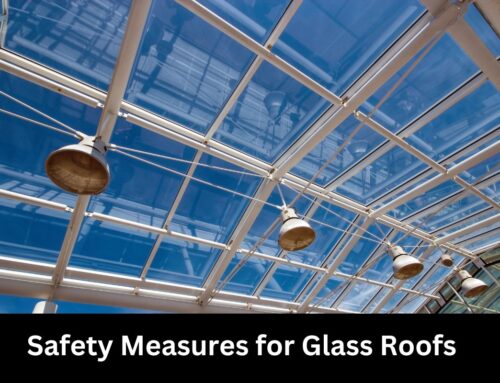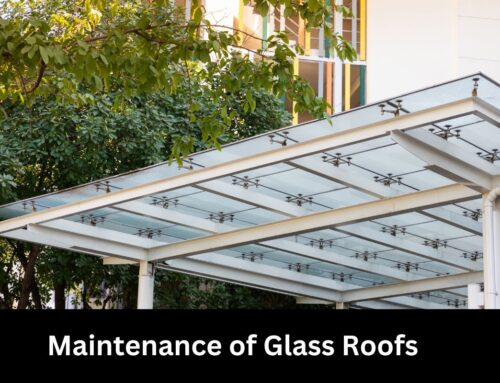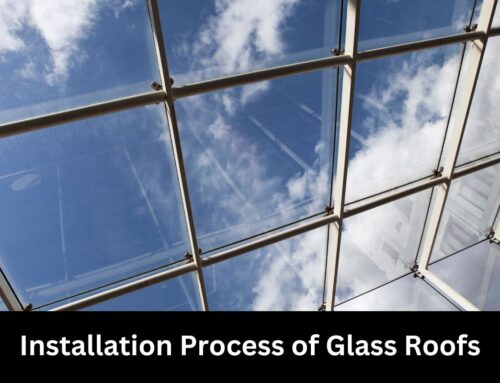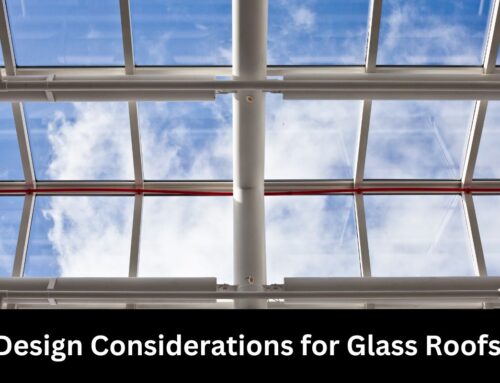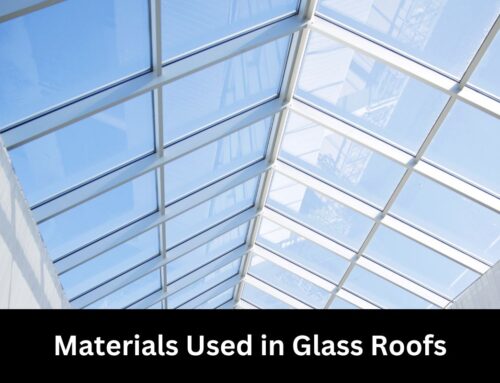Table of Contents
Are you looking to add a touch of elegance and sophistication to your living space? Have you considered installing a glass roof?
Glass roofs are a stunning architectural feature that can transform any room into a bright and airy space, while also providing protection from the elements.
But what exactly is a glass roof? A glass roof is a structure made entirely of glass, allowing natural light to flood in and creating a seamless connection between the indoors and outdoors. It can be installed on a variety of buildings, including homes, offices, and commercial spaces.
There are different types of glass roofs available, each with its own unique advantages. From fixed glass roofs that provide a permanent source of natural light, to retractable glass roofs that allow for full control over sunlight and ventilation, there is a glass roof option to suit every need.
When designing and installing a glass roof, there are several important considerations to keep in mind. These include the type and quality of glass, the structural support required, and the insulation and sealing techniques to ensure energy efficiency and safety.
In this article, we will explore the definition of a glass roof, the various types and advantages of glass roofs, design considerations, popular design options, and the installation process. By understanding the intricacies of glass roofs, you can make an informed decision and create a space that is both stylish and secure.
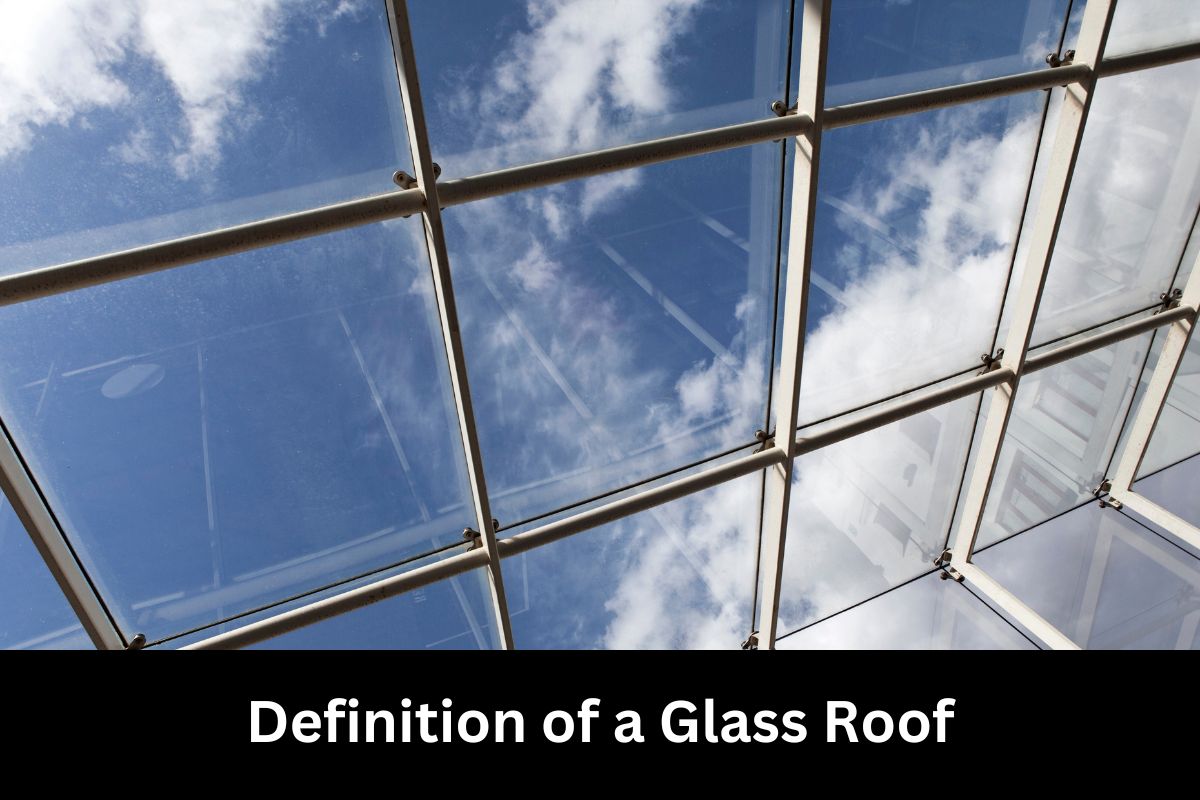
Key Takeaways
- Glass roofs add elegance and sophistication to living spaces
- They allow natural light to flood in and create a seamless connection between indoors and outdoors
- Glass roofs can be installed on homes, offices, and commercial spaces
- Different types of glass roofs are available, including fixed and retractable options
Types of Glass Roofs
If you’re looking for a stylish addition to your home, consider installing a glass roof – it’ll give your space a modern and open feel.
There are several types of glass roofs available, each with their own unique features and benefits.
One popular option is the tempered glass roof. This type of glass is specially treated to increase its strength and durability, making it resistant to breakage. It’s also designed to shatter into small, harmless pieces if it does break, reducing the risk of injury.
Another option is the laminated glass roof, which consists of multiple layers of glass fused together with a layer of plastic in between. This not only enhances the roof’s strength and safety, but also provides excellent sound insulation and UV protection.
Additionally, there are glass roofs that are coated with special films to improve energy efficiency and reduce glare. These roofs can help to regulate the temperature inside your home and protect your furniture from fading.
With their sleek design and safety features, glass roofs offer numerous advantages. Transitioning into the next section, let’s explore the benefits of glass roofs.
Advantages of Glass Roofs
One of the benefits of using a glass roof is its ability to flood a space with natural light, creating a brighter and more inviting atmosphere. Glass roofs allow sunlight to penetrate into the interior, reducing the need for artificial lighting during the day. This not only saves energy but also enhances the overall aesthetic appeal of the space.
In addition to providing ample natural light, glass roofs offer other advantages as well. They can be designed to be thermally efficient, ensuring that the interior remains comfortable in all seasons. Additionally, glass roofs can be equipped with special coatings that filter out harmful UV rays, protecting the occupants from sun damage.
To illustrate the advantages of glass roofs, consider the following table:
| Advantages of Glass Roofs |
|---|
| Floods space with natural light |
| Enhances aesthetic appeal |
| Saves energy |
| Provides thermal efficiency |
| Filters out harmful UV rays |
When designing a glass roof, there are several considerations to keep in mind, such as the structural integrity, the type of glass used, and the installation process. These factors ensure that the glass roof is not only aesthetically pleasing but also safe and durable.
Moving on to design considerations, it is important to evaluate the load-bearing capacity of the structure and select the appropriate glass type to meet safety requirements.
Design Considerations
When it comes to designing a glass roof, it’s crucial to take into account the load-bearing capacity of the structure and choose the appropriate type of glass to ensure safety and durability.
Glass roofs require careful consideration of various design elements to ensure their success. One important consideration is the structural support system. This includes evaluating the strength and stability of the existing framework or creating a new one specifically designed for the glass roof.
Additionally, the type of glass used is critical. Laminated glass, for example, is highly recommended due to its ability to hold together when shattered, reducing the risk of injury. Tempered glass is another popular option as it is stronger and more resistant to impacts and thermal stress.
Other design considerations include the pitch of the roof, which affects water drainage, as well as insulation and ventilation, which influence the comfort and energy efficiency of the space below.
By carefully considering these design elements, you can ensure the safety and functionality of your glass roof.
Moving forward, let’s explore some popular design options for glass roofs.
Popular Design Options
To create a stunning and modern look for your space, consider incorporating popular design options for a glass roof.
One popular option is the frameless glass roof. This design provides a seamless and uninterrupted view of the sky, creating an open and spacious feeling. The absence of a frame also allows for maximum natural light to enter the space, creating a bright and airy atmosphere.
Another popular design option is the double-glazed glass roof. This design consists of two layers of glass with a space in between, providing enhanced insulation and noise reduction. It’s an excellent choice for those who prioritize energy efficiency and a quiet environment.
Additionally, there are skylights and roof lanterns that can be integrated into a glass roof. These design options allow for additional natural light to enter the space and can be opened to provide ventilation. They’re perfect for areas that require extra illumination or for those who prefer the option of fresh air circulation.
When considering the installation process, it’s important to consult with professionals who specialize in glass roof installations. They’ll ensure that the design options chosen are structurally sound and meet safety standards.
By incorporating popular design options for a glass roof, you can create a visually stunning space that’s flooded with natural light and offers energy efficiency and noise reduction. So, let’s dive into the installation process and explore how to bring your glass roof design to life.
Installation Process
Let’s get the ball rolling on the installation process and bring your glass roof design to life! The installation of a glass roof requires careful planning and precise execution to ensure safety and longevity.
First, the area where the glass roof will be installed should be thoroughly inspected to ensure it’s structurally sound and can support the weight of the glass panels.
Next, a professional installation team will carefully measure the area to determine the exact dimensions of the glass panels needed. Once the measurements are taken, the glass panels will be custom-made to fit the specific dimensions of your roof.
During installation, the team will use specialized equipment to lift and position the heavy glass panels onto the roof. It’s crucial to follow proper safety protocols throughout the process to prevent accidents or damage.
Once the glass panels are securely in place, they’ll be sealed and weatherproofed to protect against leaks and ensure durability.
Finally, a thorough inspection will be conducted to ensure the installation meets all safety standards. With proper installation, your glass roof will not only enhance the aesthetic appeal of your space but also provide a safe and stunning addition to your home or building.
Frequently Asked Questions on Definition of a Glass Roof
What is the average lifespan of a glass roof?
The average lifespan of a glass roof is dependent on several factors, such as maintenance and environmental conditions. However, with proper care and regular inspections, a well-installed glass roof can last for decades, providing a safe and durable overhead structure.
How do glass roofs perform in extreme weather conditions?
In extreme weather conditions, glass roofs demonstrate remarkable resilience. They stand strong against high winds, heavy rain, and even hailstorms. Their robust construction and advanced materials ensure your safety and peace of mind.
Are glass roofs more prone to cracking or breaking compared to other roofing materials?
Glass roofs are not more prone to cracking or breaking compared to other roofing materials. Modern glass roofs are designed to withstand extreme weather conditions and are made from durable materials that offer excellent strength and resistance to impact.
Can glass roofs be customized to fit unique architectural designs?
Yes, glass roofs can be customized to fit unique architectural designs, allowing you to create a stunning and one-of-a-kind structure. However, it’s important to ensure that safety measures are in place to prevent any potential hazards.
Are glass roofs energy-efficient and do they help in reducing energy consumption?
Glass roofs are energy-efficient and can reduce energy consumption. They allow natural light to enter, reducing the need for artificial lighting. Proper insulation and glazing techniques help in maintaining optimal indoor temperatures, enhancing energy efficiency.
Conclusion
In conclusion, glass roofs offer numerous benefits and design possibilities. They come in various types, such as flat, pitched, and domed, allowing for versatile architectural solutions. The advantages include increased natural light, improved energy efficiency, and a modern aesthetic appeal.
When designing a glass roof, factors like structural integrity, insulation, and maintenance should be considered. Popular design options include skylights, solar panels, and tinted glass. During the installation process, careful planning and execution are crucial to ensure a seamless integration with the building’s structure.
For example, a real-life case study showcases how a glass roof installation transformed a dark and outdated conservatory into a vibrant and inviting space, increasing the property’s value significantly.
Related Articles

